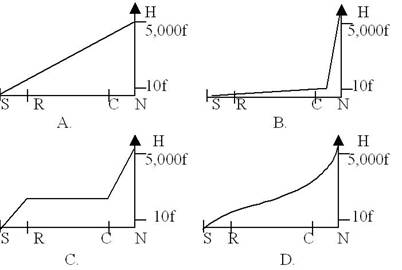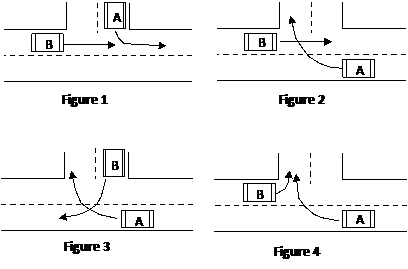题目内容
. Before he went abroad,he spent as much time as he _____ English.
A. could learning B. learned C. to learn D. could learn
A

Suppose that we lined up our roughly 14 million United States businesses in order of size, starting with the smallest, along an imaginary road from San Francisco to New York. There will be 4,500 businesses to the mile, or a little less than one per foot. Suppose further that we planted a flag each business. The height of the flag pole represents the yearly volume of sales (销量) , each $ 10, 000 in sales in shown by one foot of pole.
The line of flagpoles is a very interesting sight. From San Francisco to about Reno, it is almost unnoticeable, a row of poles about a foot high. From Reno eastward the poles increase in height until, near Columbus, Ohio - about four - fifths of the way across the nation - flags fly about 10 feet in the air.
But as we approach the eastern terminus (终点) , the poles suddenly begin to mount (升高) . There are about 300, 000 firms in the country with sales over $ 500, 000. These firms take up the last 75 miles of the 3,000 - mile road. There are 200, 000 firms with sales over $ 1 million. They take up the last 50 miles. Then there are 1, 000 firms with sales of $ 50, 000, 000 or more. They take up the last quarter of a mile before the city limits, flags flying at cloud height, 5 , 000 feet up .
At the very gate of New York, on the last 100 feet of the last mile , we find the 100 largest industrial firms . They have sales of at least $ 1.5 billion, so that their flags are already miles high. Along the last 10 feet of road , there are 10 largest companies . Their sales are roughly $ 10 billion and up : their flags fly 190 miles in the air , almost in the stratosphere (平流层) .
【小题1】What is the author’s main purpose in this passage?
| A.To tell the reason why the largest firms are in New York. |
| B.To show the geographical distribution (分布) of the United States businesses. |
| C.To provide a general idea of the size of businesses in the United States. |
| D.To tell us how the United States businesses are arranged. |
| A.San Francisco, Reno, New York, Columbus. |
| B.San Francisco, Reno, Columbus, New York. |
| C.New York, Columbus, Reno, San Francisco |
| D.New York, Reno, Columbus, San Francisco |
| A.The last 75 miles. | B.The last 50 miles. |
| C.The last 100 feet of the last mile. | D.The last quarter of a mile |
S =" San" Francisco R =" Reno" C =" Columbus" N =" New" York H =" height" F = feet


